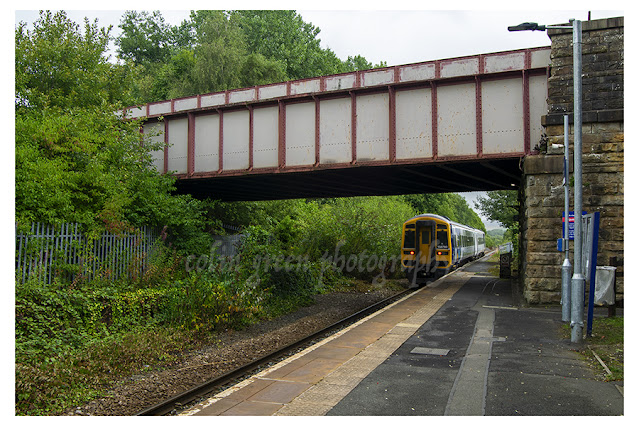Burnley Barracks is a railway station on the East Lancashire Line. It is a request stop and offers a card only ticket machine and basic shelter as its only facilities. It has step free access but no car parking facilities other than on street parking. The station being only a request stop, 1 of 4 on the East Lancashire line is not a busy station although in the last full year of passenger figures 2020/21 attracted 9316, the previous 4 years averaging 21561 per annum, a drop in numbers of 12245.
The station became a request stop on the 14th May 2012, this means you have to inform the ticket inspector you would like to get off the train, or give a clear signal to the driver you would like to board. On the day I visited this was the busiest station of the 8 on the East Lancashire I visited with 3 passengers boarding and 2 alighting the train. The stations close location to both Rose Grove a few hundred metres east, and Burnley Central a few hundred metres west has Barracks earmarked for closure should the lines connection with Skipton and upgrade of the line come to fruition.
 |
| Colne bound training just leaving. It would 45 minutes before another train passed through the station. There is 1 train in each direction approx. every hour. |
Burnley Barracks opened on the 18th September 1848, it was the temporary terminus of the line yet to be completed to Colne and known as Burnley Westgate. In February 1849 the station was closed as the line was completed and there it's story was supposed to end, however development of the local area in to housing, industry and an army barracks led to Burnley Westgate reopening in September 1851, taking its name from the nearby cavalry barracks. The station opened as a 2 platform stop connected by a footbridge that dealt on the whole with just passengers, the nearby stations Rose Grove and Bank Top (Burnley Central) handling the goods traffic. The former eastbound platform remains although this is now largely overgrown and not visible, this was taken out of use when the line was singled beyond Rose Grove Station in 1986.
The army barracks closed in December 1898, and slum clearances of the local area in the 1960's and 70's led to declining passenger numbers, the construction of the nearby M65 motorway contributing to this too. The station has seen a steady rise of passenger use in recent years with new housing developments and peoples reluctance to use the car increasing.
There are a total of 5 pictures I took around the station, they can be seen here or on Clickasnap where they are full size, resolution and un-watermarked. Copies can be purchased there too if required.
 |
| The entrance sign to the station |
 |
| The station looking eastward (towards Colne) from the end of the platform. The stations only facilities are the shelter seen before the bridge and a ticket machine to my right just out of shot. |
Thanks for looking and please take a moment to share. All the pictures remain the copyright of Colin Green.





















































